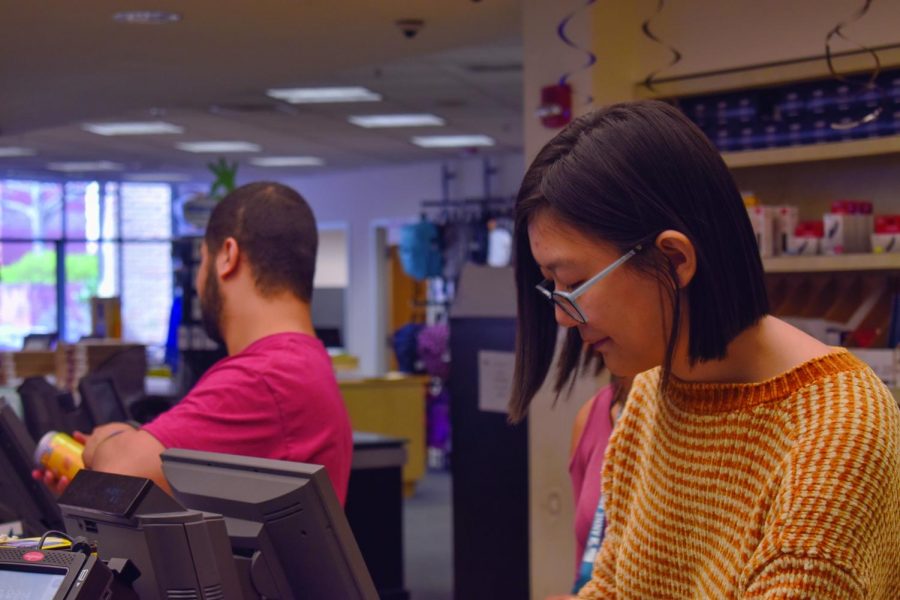Part-time workers plan for raise in hourly pay
Starting next year, part-time student workers like Hailee Edmundson (right) will earn more money per hour.
April 30, 2019
AACC students who work part-time will earn more money starting next year because the state Legislature voted in March to raise the minimum wage—a little at a time—to $15 an hour by 2025.
Maryland’s minimum wage is $10.10 an hour. The new law increases that amount incrementally to $11 an hour in January 2020; to $12.50 by 2022; and to $15 by 2025, making Maryland the sixth state in the country to mandate a $15 minimum wage.
Gov. Larry Hogan did not support the law. In fact, he vetoed it in late March, and offered a counterproposal: a $12.10 minimum wage cap in 2022.
Hogan argued businesses would move out of state to save money if they had to pay their workers more than neighboring states whose minimum wages are lower.
The minimum wage in Virginia is $7.25 an hour; Delaware and West Virginia’s are $8.75; and the District of Columbia’s is $13.25.
Hogan proposed that the state would increase the minimum wage after 2022 only if surrounding states have an average combined minimum wage of 80 percent of Maryland’s.
But the Legislature overrode Hogan’s veto the following day.
Still, some legislators who voted for the $15 minimum wage bill said they fear the increase could hurt small businesses.
“I fully support people making a living wage,” said state Sen. Katie Fry Hester, who announced in a statement that she is working with a bipartisan group of legislators “to look … at options” to help small businesses comply with the law.
“The reason for the working group is just to continue to look at small businesses and the difference between the different parts of our state, Western Maryland and the Eastern Shore, [where] the cost of living is a lot different than it is here in the center of Maryland,” she told Campus Current.
“Just making sure that we’re looking at all of these options and making sure that the bill and the raising of the minimum wage really do lift up people everywhere and it doesn’t force small businesses to close.”
She added: “When an issue like [minimum wage] breaks solidly across party lines, it’s an indication that we didn’t reach as good a compromise as we could have.”
AACC students also wavered between support for higher pay and concern over the state’s ability to keep paying jobs in Maryland.
“It affects how we live here because the cost of living is so high,” second-year chemistry student Catelyn Middlebrooks said. “So it makes sense to raise [minimum wage] here.”
But she said a $15 minimum wage could cost the state some jobs. “It makes sense to wait until other states meet [our minimum wage],” she said, “so it doesn’t affect jobs as much.”
Some said Maryland has a higher cost of living than surrounding states, so a higher minimum wage is needed.
“We’re right next to D.C. [and] we’re right next to Baltimore … it’s so much more expensive living here. So [a lower minimum wage] wouldn’t really be fair,” second-year chemistry student Simone Desouza said.
But other students’ opinions on minimum wage varied.
“What needs to happen,” first-year undecided student Kenneth Hilladrake said, “is there needs to be a balance between the money that’s being made and the costs of products, services and basic living necessities.”












